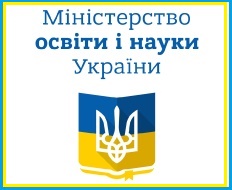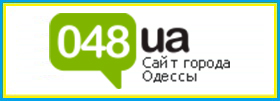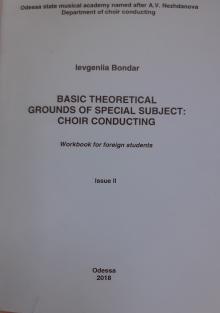This supply is intended for foreign students of choir departments in musical higher educational establishments. This work represents brief information on musical terminology and remarks, theory of conducting, history of styles, genres, as well as some questions on science of choir knowledge of which is the basic necessity for choirmaster students. This work is a kind of a handbook and represents a short course of introduction into special subject (conducting). Multi-language publication is explained with the orientation of this publication to the target group – foreign students.
The entire material is divided into grades in accordance with the educational program and is estimated for a five-year term of education. Each grade (year) contains the following sections:
- vocabulary of terms
- theory of conducting
- handbook in the science of choir
- brief information on musical styles, forms and genres of choir.
Separately there is places a vocabulary of additional terms in special subject and main Latin texts (of choir creations) and translations to them. This material is oriented first of all to the self-instruction for better understanding at the studies.
This handbook is purposed for personal use, that’s why in the end of each grade the free space is left – for addition of some new material that is necessary and interesting personally for the owner.
Contents
Introduction…………………………………………………………………………6
- Description of educational discipline: "Speciality. Choral conducting"………...7
- Theoretical bases of speciality:
The 1st course. ……………………………………………………………….14
1.1. Terminology. Designation of main tempos
1.2. Theory of conducting.
Structure of conductor's apparatus. Structure of conductor's gesture. Auftakt. Conducting Patterns. Fermata.
1.3. Handbook in the choir studies.
Voices in choir. Attack. Type and form of choir. Arranging parts in a choir.
1.4. Meaning of a musical form and musical genre. Professional thinking of the conductor.
1.5. Basic musical styles.
The 2nd course. ……………………………………………………………….22
2.1. Terminology. Main designations for changes of tempo
2.2. Theory of conducting.
Positions of conductor. Plans of conductor. Diapasons of conductor.
Conducting Patterns (continuation).
2.3. Handbook in the choir studies.Varieties of choir groups. Сhoir system.
2.4. Meaning of musical form and musical genre (continuation).
The 3rd course. ……………………………………………………………….31
3.1. Terminology. Tempos of articulation. Additional meanings.
3.2. Theory of conducting.
Conducting Patterns (continuation).
3.3. Handbook in the choir studies.
Ensemble. Types of ensemble.
3.4. Brief information on musical forms.
3.5. Brief information on musical genres.
The 4th course………………………………………………………………….39
4.1. Terminology. Tempos-images.
4.2. Hand book in the choir studies.
Structure of vocal apparatus and work of respiratory organs.
4.3. Brief information on musical styles. XIX-ХХ centuries.
4.4. Brief information on musical genres (continuation).
The 5th course. Independent work with compositions………………………..47
5.1. Work with score.
5.2. The rules of learning of a composition with a choir.
- Additional vocabulary of terms in special subject……………………50
IV. Main Latin texts and translations:
- Messa (I.S.Bach. Messa h-moll)……………………………………54
- Gloria……………………………………………………………….55
- Credo………………………………………………………………..55
- Requiem……………………………………………………………..56
- Stabat Mater…………………………………………………………60
- Oratoria «Messia»…………………………………………………...62
- Magnificat…………………………………………………………...73
V. Library of student-choir-master………………………………………………74
- Recommended literature about conducting
- Recommended literature about choir studies
- Recommended collections of choral literature
Subject Index…………………………………………………………………….77
Bibliography……………………………………………………………………. 79






